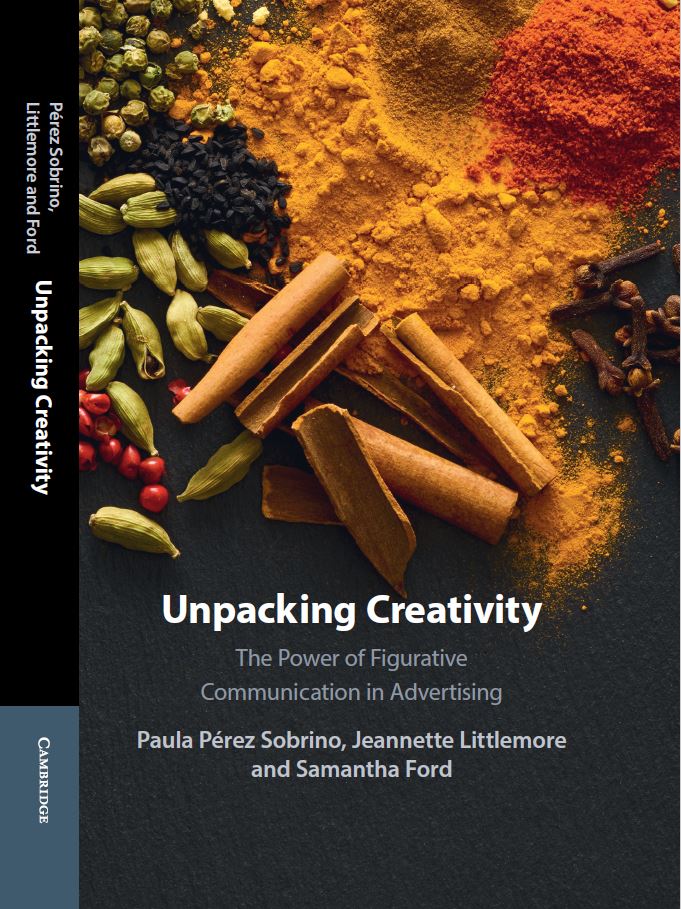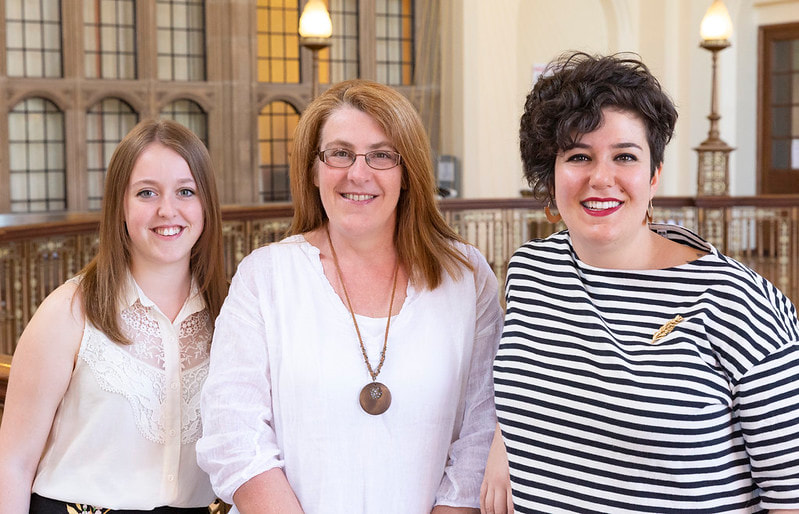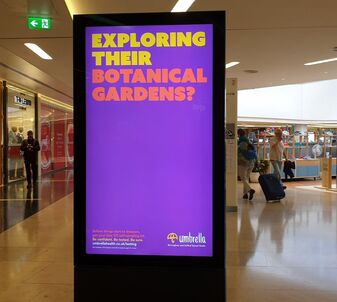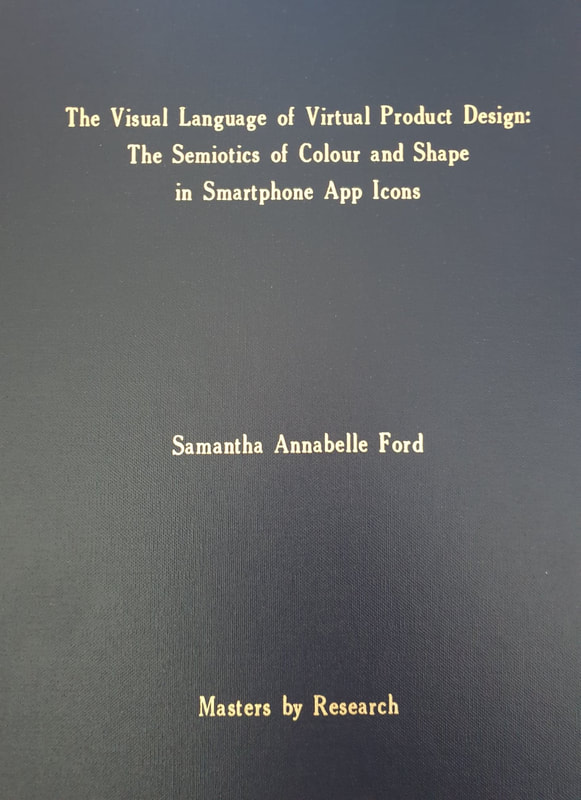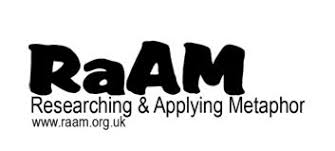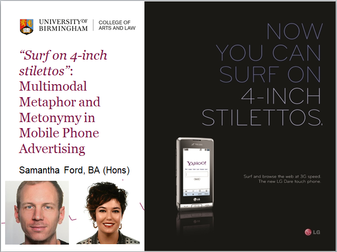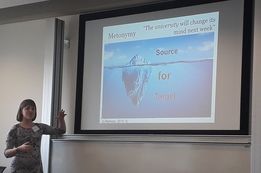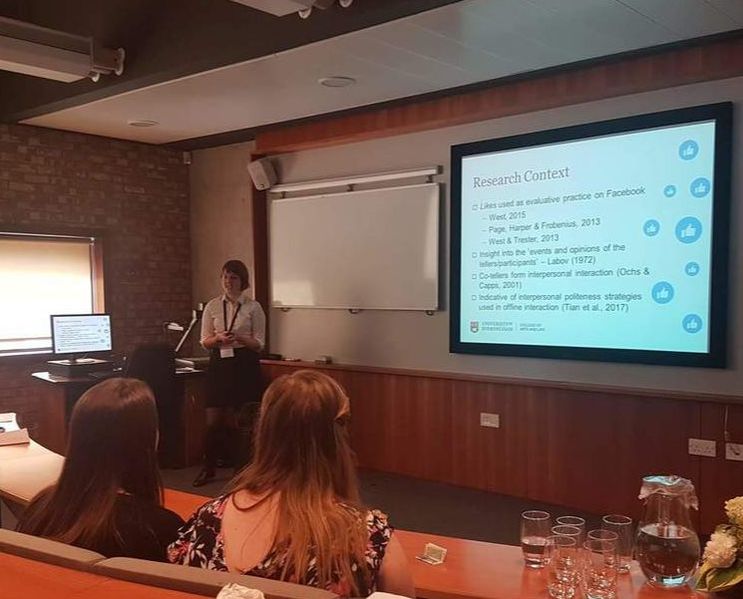What drives emotion and physiological arousal in adverts? The critical role of figurative operations8/3/2022 Citation: Houghton, D., Littlemore, J., Ford, S., Harfield, C. and Marder, B. (in press 2022). What drives emotion and physiological arousal in adverts? The critical role of figurative operations, In A. Athanasiadou and H. Colston, Figurativity and Human Ecology. Figurative Language and Thought Series, Amsterdam: John Benjamins. DOI: 10.1075/ftl.17.08hou. Abstract:
The inclusion of figurative operations in marketing videos has the potential to improve the effectiveness of marketing campaigns due to their reported ability to trigger emotional responses, thus making the campaigns resonate more strongly with the viewer. This study explored the relationship between the presence of three figurative operations (hyperbole, metaphor and metonymy) in campaign videos and the levels of physiological arousal and emotion that were triggered by those videos. Seven videos were coded for these three embedded figurative operations. Participants watched the videos in laboratory conditions, where their levels of electrodermal activity and self-report emotional responses were recorded. The ability of these figurative operations to trigger physiological arousal was compared to that of two other features that have been shown to promote arousal (the presence of humour and unmarked contrast). The presence of hyperbole led to higher levels of arousal than humour and unmarked contrast, the presence of metaphor led to higher levels of arousal than humour, and the presence of metonymy led to higher levels of arousal than humour, but lower levels than unmarked contrast. Associations between these arousal levels and the reported emotions are discussed, and collectively provide insights into the optimal use of figurative operations in marketing campaign videos. Our findings contribute to a deeper theoretical understanding of the relationship between figurative operations and arousal, and provide practitioners with information regarding which figurative operations are likely to evoke a stronger emotional response when used in marketing videos.
0 Comments
NEW BOOK OUT NOW! - Unpacking Creativity: The Power of Figurative Communication in Advertising2/9/2021
Book description Figurative communication (the use of metaphor, metonymy, hyperbole and irony) provides economy of expression, clarity, persuasiveness, politeness, evaluation, and communication of emotions. However, it also increases the potential for misunderstanding in situations when people lack shared background knowledge. This book combines theoretical frameworks with empirical studies that measure the effectiveness of different approaches to the use of figurative language in advertisements, to show how to maximise the benefits of creative metaphor and metonymy in global advertising. It highlights how subtle differences in colour, layout, and combinations of different kinds of figurative language affect the reception and appreciation of creative advertising, shedding new light on the nature of figurative communication itself. With a balance between theory, experiments and practical case studies, this book is accessible for academics in linguistics and communication studies, as well as advertising and marketing professionals. Students and researchers in communication, linguistics, and cognitive linguistics as well as advertising researchers and practitioners will find the book interesting and informative. Reviews "Two recent developments in figurative language research are interwoven brilliantly in Paula Perez-Sobrino, Jeannette Littlemore, and Samantha Ford's Unpacking Creativity: The Power of Figurative Communication in Advertising. These are multimodal figurativity, and figurativity as a powerful means of performing social work (i.e., influence, persuasion, attitude change, identification, etc.). Through a cornucopia of juicy examples, the authors expose the multiple forms of isolated and blended figures underlying creative advertising, and what all the figurativity accomplishes." - Professor Herbert L. Colston, Department of Linguistics, University of Alberta "This book provides an effective analysis of visual and language metaphors and their interaction, informed by astute application of cognitive science to a range of examples from advertising. Students and researchers in communication, linguistics, and cognitive linguistics as well as advertising researchers and practitioners will find the book interesting and informative. It is well-written and readable, and would be an excellent text for an advanced course in advertising, communication, or cognitive linguistics." - Professor L. David Ritchie - Department of Communication, Portland State University
Introducing new book Unpacking Creativity: The role of figurative communication in advertising11/10/2019
from text to sound to imagery to movement. It can also involve the consumer in very different ways than what it used to (think back to when we would have to read advertising).
Advertisers are becoming increasingly aware that their audience are critical of their craft. In recent years, advertising has shifted from selling a product to selling an experience. It is moving toward, or has already reached, integrating advertising a product, service, or experience with a story or activity that involves the consumers themselves. Research has shown that figurative language including metaphor and metonymy is frequently used in print advertising (Forceville, 1996; Perez-Sobrino, 2017; Littlemore and Perez-Sobrino, 2017). The new ways in which advertising is reaching its audience must also be explored in order for academia to keep pace with the changing world. As such, Jeannette Littlemore, Paual Perez-Sobrino, and myself - Samantha Ford - have come together to write a collaborative monograph on the role of figurative communication in advertising in the modern world. With the book, we hope to draw together key insights into how academics and advertisers alike may work together (as in the EMMA project) to improve the way in which advertising may be used for the better; to raise awareness of important issues and highlight essential services that will improve our lives, and not just to sell products. For more information, visit the EMMA website.
examined whether participant responses varied according to: (a) participant age, gender, sexuality, and ethnicity, and (b) the figurative nature of twelve campaign adverts, in order to establish which figurative factors shape the extent to which consumers report that they find the adverts funny, appealing, and say they would engage with the campaign’s call to action (i.e. to order an STI kit) or its presence on social media. The figurative nature of the adverts varied three-way: (1) the level of conceptual work required to decode the adverts’ meaning; (2) the progression of the sexual conquest narrative (i.e. where in the progression of the sexual act from dating to sexual intercourse was referred to via metaphor); (3) the level of creativity (conventional to novel) in the adverts.
To read the full article, click here. Citation:
Ford, S. (2019). The Visual Language of Virtual Product Design: The Semiotics of Colour and Shape in Smartphone App Icons. (Master’s by Research dissertation, University of Birmingham, UK, 15th July 2019). Retrieved from: https://www.samantha-ford.com/publications.html.
methodological challenges in identifying and classifying multimodal instances of metaphor and
How do likes and reactions operate as interpersonal politeness strategies when evaluating Facebook status updates posted in 2016?
Facebook status updates, identifying when they operate as politeness strategies. Three stages of data have been collected: a self-report survey, a sub-sample of status updates, and a contextual questionnaire for status update authors. Likes and reactions were found to operate as interactional, interpersonal, and facework strategies on Facebook. Likes and reactions are employed more for positive (than negative) evaluation, as a means to signal endorsement, and as a supportive minimal response that emulates offline positive feedback cues. Likes are particularly used as a form of facework; to signal to the status author that their status has been 'heard', read, and acknowledged (West, 2015: 54). Meanwhile, reactions such as love and haha can be used to maintain or display offline relationships. The small selection of status updates analysed in this study provides an indication as to how likes and reactions are used as positive, supportive, politeness strategies when evaluating Facebook status updates in 2016.
Citation:
Ford, S. (2017). Multimodal metaphor and metonymy and the figurative complexity of mobile phone advertising: A comparison between mobile phone manufacturer and network provider advertisements. (Bachelor's dissertation, University of Birmingham, UK, 5th July 2017). Retrieved from: www.samantha-ford.com/publications |
Categories
All
Archives
October 2022
|
||||||||||||||||||||||||||||
Photos from wuestenigel (CC BY 2.0), wuestenigel
